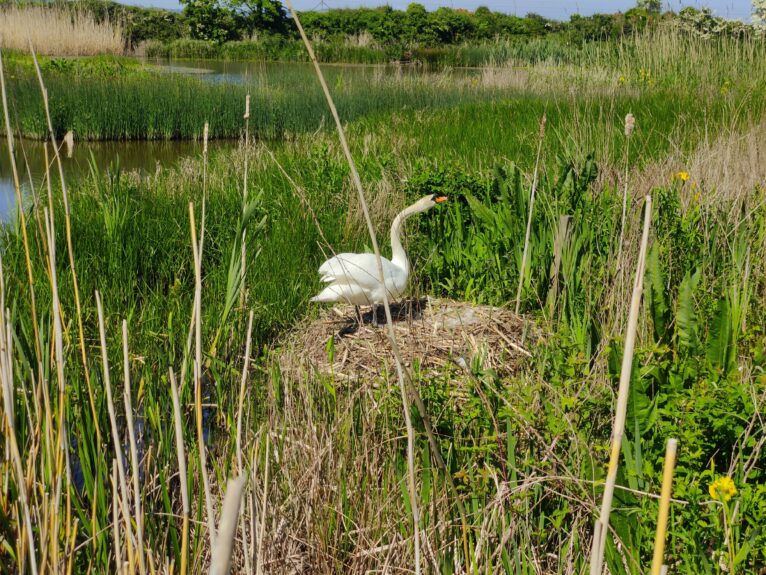Lead regulation comes shooting back: dynamic (dis)alignment

Regulation is complex and it takes very little for two jurisdictions working on the same topic to come to slightly (if not very) different solutions. So how and why does this matter in light of renewed interest in dynamic alignment on both sides of the Channel? In this blog we explain that it matters a lot, especially for those groups and organizations that are directly involved. We illustrate our argument by revisiting the story of lead shot in wetlands. Back in 2021, we argued that it was a great example of divergence. But what about today?
Regulatory change
But first, some background. Divergence is to varying degrees already here, and so is alignment. How much there is of each is often in the eye of the beholder (and depends on how far in the regulatory weeds they are willing to go). Hence, where for example the latest UKICE regulatory tracker talks of 21 cases of alignment, most of these are to do with UK-EU reset announcements, that have yet (for example on SPS) to be hashed out. The devil (and divergence) may well be in the details.
This raises a question of threshold: are there different margins of tolerance for different types of divergence? How much divergence is needed before it is considered problematic, and why? Here we can note that the threshold for problematic divergence under the TCA is largely to do with trade. Given the Starmer administration’s ‘UK-EU ‘reset’ should a different approach be adopted for the ‘renewed partnership’, or should trade remain central to distinguishing between acceptable and unacceptable divergence ?
Back to lead shot
Back in 2021 when the EU was introducing its ban on lead shot in wetlands, we thought it provided a great example of:
- Intra-EU divergence: many EU member states had already banned lead shots in wetlands, while others, such as Ireland, had not. The new regulation adopted as part of REACH was all about harmonizing an EU-wide approach and reducing divergence.
- Intra-UK divergence: while both Northern Ireland (2009) and Scotland (2004) had bans on use already in place, England and Wales had instead narrower bans for specific species (ducks, geese, coot, moorhen) and those in Sites of Special Scientific Interest.
- Regulatory complexity: the EU had a more expansive definition of wetlands – including all peatlands, but also 100m buffer zone surrounding them – compared to NI or Scotland, furthermore the EU regulation banned not just use but possession of lead shot in wetlands.
We argued that the broader approach to wetlands in the EU created a likely obligation for NI – which was bound by REACH under the NI Protocol to update its practice – and a test for Scotland of its ambition to ‘keep pace’ with the EU.
Dynamically aligning or lagging behind?
Fast-forward to 2025 and Northern Ireland has still not changed its legislation. But Defra, acting in this instance for England, Scotland and Wales, is changing its approach. Following proposals from the Health and Safety Executive back in 2024, Environment Minister Emma Hardy has announced a draft UK REACH regulation which would see a ban on lead in ammunition, to be legislated on by summer 2026 and enter into force three years later.
But that is not all. Great Britain is not simply ‘catching up’ with an immobile EU because the latter is now working on further regulatory change under REACH, this time a wider ban on lead in ammunition and fishing tackle. Hence, we need to compare not only the ambition of Defra’s planned ban with the 2021 EU regulation but with the proposal for a 2025 regulation.
| EU 2021 | UK 2025*[draft] | EU 2025* [proposal] | |
| Terrains covered | Wetlands + 100m buffer, but member states can expand to whole territory if 20%+ of territory is wetlands. | All of Scotland, Wales, England. | All of EU. |
| Type of ammunition and tackle | Lead shot | gunshot, bullets (of various calibers). | gunshot, bullets (of various calibers), sinkers, lures, wires |
| Percentage of lead at which ban kicks in | 1% in shot | Over 1% in shot, 3% in other projectiles | Over 1% overall, over 3% for lures made of copper alloys |
| Exempted uses | None. | 11 types including elite athletes to indoor shooting to police to museum collections and forensic uses | 11 types, ranging from defence to indoor shooting, to forensic analysis. |
| Transition period | 2 years | 2-3 years | Ban on use or carrying ranging from 6 months (in fishing wires and in drop-in sinkers when fishing) to 15 years (for to gunshot of sizes between 1.9 mm and 2.6 mm, under certain conditions). |
If both the GB and EU proposals to come into effect, GB would not only catch up with EU2021 rules, but leapfrog them to align, in part, with the EU2025 ones. Were that to happen, Northern Ireland would be the only jurisdiction across the UK and EU where lead shots would only be banned in wetlands, and not more generally.
Of course, there are some important points of detail. For example, the scope of the respective bans differ: not only do the draft GB and EU rules use different categorization for bullets, but the EU ban also goes beyond shots and bullets to consider lead in fishing tackle, which the UK is not yet doing. And finally, the regulations have different transition periods, with the UK being much simpler – one deadline overall but the EU opting for different timelines for different items. As such, GB will be much more but still not fully aligned with the EU.
Where do lead shot lead us?
One could interpret the lead story in a number of different ways. It could be read as a story about the differing levels of administrative capacity, with GB struggling to keep pace with the EU. Looking at the timeline, we can see that the HSE started work on the issue as long ago as 2021 (including a period of public consultation in 2023). As David Henig recently argued, “what UK politics has not grasped is the time taken by all of this [regulatory] activity.”
Second, it could also be read as a useful reminder that regulatory change (and hence the potential for divergence) is constant. Even if (and it’s a big if) the evidence used for policy development were to be the same, how it is interpreted and used by administrators guided by the political preferences of decision makers naturally differs. For example, the EU’s proposal is currently contested by two member states and as such, may never be adopted. And even if GB’s proposal is adopted in 2026, it is not expected to enter into force until 2029 – which is when the Starmer government must stand for re-election.
Third, this case also shows us how divergence and alignment are not always but more frequently part of a complex mix: here the UK and EU are both growing closer (on lead shot) and further apart (on fishing tackle).
Above all, what it reminds us is that divergence itself is dynamic. Different jurisdictions work at different speeds. Political leaders come and go. When comparing two jurisdictions who is ‘best’ or ‘most ambitious’ on any given environmental issue may change year on year as regulation evolves, or depends on what issues you choose to prioritise.
In conclusion: is this time well spent? Are those hard-won differences worth it, and for whom? Fishers, hunters, the environment? Are lead shot an area where the UK should pursue regulatory autonomy, or one where the UK should more clearly ‘embrace rule-taking’? As the current UK government appears to signal much greater interest in dynamic alignment with the EU, political attention has so far been on big ticket items – Emissions’ Trading, phytosanitary standards etc. – but divergence has now crept throughout the UK regulatory machinery (and even more so when we consider devolution). This regulatory pandora’s box has been opened for years now: dealing with its practical consequences for business, consumers and citizens will take more than a political commitment to align or diverge.




